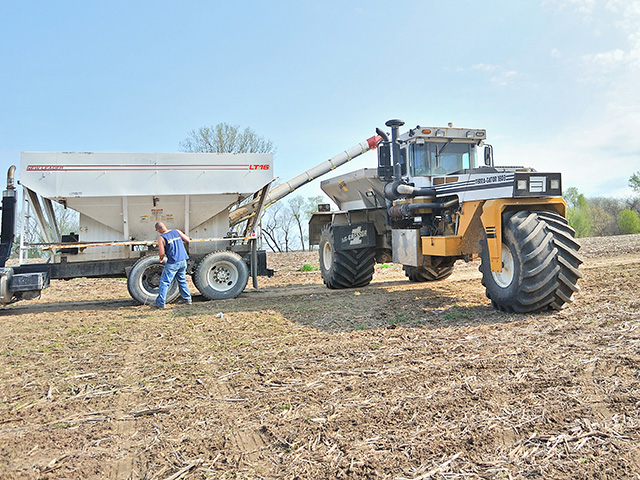Ag Policy Blog
USDA Spotlights NRCS Nutrient Management Programs
With President Joe Biden set to sign the Inflation Reduction Act on Tuesday, USDA announced plans Monday to bolster Natural Resources Conservation Service (NRCS) programs "to improve opportunities for nutrient management."
USDA stated NRCS "will target funding, increasing program flexibilities, launch a new outreach campaign to promote nutrient management's economic benefits in addition to expanding partnerships to develop nutrient management plans. This is part of USDA's broader effort to address future fertilizer availability and cost challenges for U.S. producers."
USDA highlighted the $19.5 billion in new conservation funds for climate-smart agriculture in the IRA legislation. That includes:
-Environmental Quality Incentives Program (EQIP), $8.45 billion
-Regional Conservation Partnership Program (RCPP), $4.95 billion
-Conservation Stewardship Program (CSP), $3.25 billion
-Agricultural Conservation Easement Program (ACEP) receives $1.4 billion
NUTRIENT MANAGEMENT
Using USDA's conservation programs, America's farmers and ranchers will have streamlined opportunities to improve their nutrient management planning, which provides conservation benefits while mitigating the impacts of supply chain disruptions and increased input costs, USDA stated.
P[L1] D[0x0] M[300x250] OOP[F] ADUNIT[] T[]
"The pandemic and Ukraine invasion have led to supply chain disruptions, higher prices of inputs, and goods shortages in countries across the globe," Agriculture Secretary Tom Vilsack said in a news release. "USDA is responding to the needs of U.S. producers and consumers by adding program flexibilities, expanding options and assistance, and investing in nutrient management strategies to help farmers address local resource concerns and global food security while also improving their bottom line."
Vilsack is out touting the IRA in various states. He was in Michigan on Monday with Senate Agriculture Committee Chairwoman Debbie Stabenow and Rep. Dan Kildee. Vilsack will be in Colorado on Tuesday and Wednesday visiting areas with the state's two senators. On Thursday, he'll be in Iowa with Rep. Cindy Axne and U.S. Trade Ambassador Katherine Tai.
"President Biden and Congress have taken an important, historic step towards easing the burden of inflation on the American public and meeting the moment on climate," Vilsack said. "Agriculture has long been at the forefront of our fight against climate change. From climate-smart agriculture, to supporting healthy forests and conservation, to tax credits, to biofuels, infrastructure and beyond, the Inflation Reduction Act provides USDA with significant additional resources to continue to lead the charge."
NRCS will focus on improving three areas to help producers with nutrient management:
-Streamlined Nutrient Management Initiative -- A streamlined initiative will incentivize nutrient management activities through key conservation programs, including the Environmental Quality Incentives Program (EQIP), EQIP Conservation Incentive Contracts, and the Conservation Stewardship Program. The initiative will use a ranking threshold for pre-approval and include a streamlined and expedited application process, targeted outreach to small-scale and historically underserved producers, and coordination with FSA to streamline the program eligibility process for producers new to USDA. In addition to otherwise available funding at the state level, NRCS is targeting additional FY23 funds for nutrient management. NRCS is also announcing a streamlined funding opportunity for up to $40 million in nutrient management grant opportunities through the Regional Conservation Partnership Program (RCPP).
-Nutrient Management Economic Benefits Outreach Campaign -- A new outreach campaign will highlight the economic benefits of nutrient management planning for farmers. The potential net savings to farmers who adopt a nutrient management plan is estimated to be an average of $30 per acre for cropland. It is estimated that there are 89 million acres of cropland (28% of total U.S. cropland) currently exceeding the nitrogen loss threshold; and if all those acres implemented a nutrient management plan, the average net savings would be $2.6 billion. NRCS staff develop nutrient management plans to help producers use nutrient resources effectively and efficiently to adequately supply soils and plants with necessary nutrients while minimizing transport of nutrients to ground and surface waters.
-Expanded Nutrient Management Support through Technical Service Providers Streamlining and Pilots -- New agreements with key partners who have existing capacity to support nutrient management planning and technical assistance will expand benefits and serve as a model to continue streamlining the certification process for Technical Service Providers (TSPs). NRCS is also developing new opportunities to support partner training frameworks, nutrient management outreach and education, and new incentive payments through TSP partners for nutrient management planning and implementation.
For more information on nutrient management, visit www.farmers.gov/global-food-insecurity
Or visit NRCS at your local USDA Service Center.
For more details on the Inflation Reduction Act, See " Divided House Sends Climate, Health Care Bill to President Biden's Desk in Partisan Vote" https://www.dtnpf.com/…
Chris Clayton can be reached at Chris.Clayton@dtn.com
Follow him on Twitter @ChrisClaytonDTN
(c) Copyright 2022 DTN, LLC. All rights reserved.






Comments
To comment, please Log In or Join our Community .